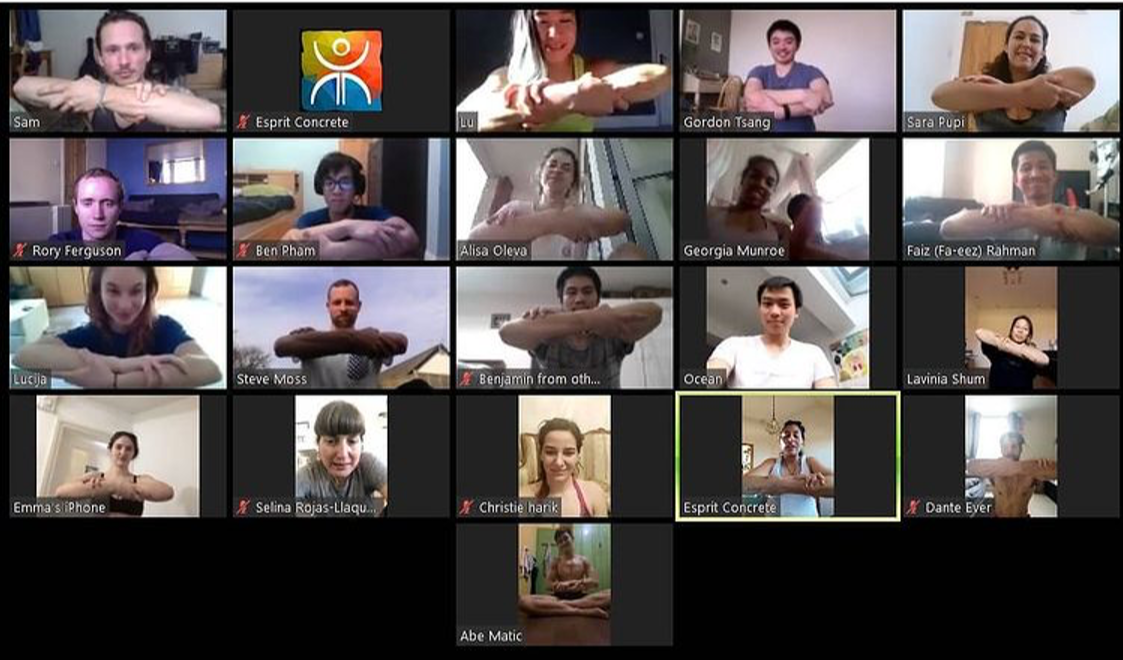Community is such an important aspect of Parkour, so why on earth would you opt to train on your own?
Personally I have found it very helpful in quite a number of ways. The first is when I am getting back into movement after an enforced break, as I’ve written about in another post. However that’s not the only time. For many years before the pandemic stopped classes and jams I’d been travelling extensively for work, preventing me from training regularly.
Business travel sounds glamorous, but it is all too easy to fall into a pattern of early mornings, long days in enclosed offices, late restaurant dinners, sleep in a nice hotel, repeat. No fresh air and an ever growing waistline. It becomes unhealthy no matter how luxurious it all is. And boring and lonely if you are not travelling with colleagues.
Finding even small challenges around the office or hotel meant that I could channel some basic movements. I’ve jumped around hotel car parks, walked along office fences and vaulted over walls on beaches with pacific waves crashing in the background. The best was discovering a fitness trail a short trot away from a hotel where I drilled skin-the-cats and spinning on bars until I was completely comfortable with them. Because I was there on my own I was able to take as long and as many attempts as I needed without holding others back.
And that’s important for me. It takes me a long time to learn physical sequences and I worry that it will annoy others. I’m sure I’m wrong, but it’s still a concern. Being naturally distracted it is helpful for me to have the ability to just do the same move over and over and over again until it sinks into muscle memory. The freedom to be boring. The freedom from being considerate of others, no matter how much I realise that they would be supportive and forgiving. Removing that concern helps me focus on the minutiae of the move, something which is neither natural nor easy for me.
There are disadvantages of course, beyond the lack of the companionship that makes training with others so valuable. The most obvious is the lack of supervision - there is no one there to help improve technique. That’s why solo training works best at drilling something that you sort of know but need to perfect. It also helps to video yourself and review the video to see how well you are doing. You can share it with friends for feedback or compare it with YouTube videos. I used this approach to improve - I won’t say perfect - my Parkour rolls during lockdown. While I was initially happy to just land and roll without hurting myself I knew that the rolls were terrible and blind repetition was not helping. Recording my ignominious squintness enabled me to correct it. Mainly. Still progress to be made, but that’s the joy of Parkour.
Always have a small tripod and an adapter for a phone with you. That way you can set up a clear steady shot capturing the required field of view. I found watching myself after a couple of attempts really helped tune my movement. There are also automatic tracking devices but I found that they aren’t yet fast enough to track runs and jumps although they can help with slower moves. Nothing’s as good as a patient person holding the camera, but that’s not always possible.
A hazard is the potential for injury without anybody to help. For this reason I am always careful to set myself a realistic target and stick to it. It is satisfying to meet the target, but by pacing the activity it minimises the risk of injury. It really is not a great idea to train on your own in a place where you might fall badly and not be discovered.
Another risk is simply doing too much. It’s natural to stop and chat, to compare moves, to watch the others when there are others to watch. When training on your own you need to pace yourself, remember to breathe, take drinks, and rest. It is all too easy to get stuck in a loop trying to achieve something and get worse instead of better. A short break and it becomes easier again.
I have three other rules that I always follow. The first is forcing myself to do a complete warm up, as reinforced by the Sweat the Small Stuff interviews. The second is to carry a first aid kit, something which I’ve done since a literally bloody shinjury. The third is I try and find private places away from others. I don’t like the idea of disturbing residents and I find myself all too willing to argue futilely with security people, but the real motivator is to not have people asking what I’m doing or the inevitable shouts of “hardcore Parkour.” That even happened repeatedly when I was drilling wall runs on a beach on holiday!
While I am really looking forward to getting back to classes and continuing my one-to-one training sessions I know that I will still take time for solo training going forward. Classes will show me what I need to do, but the solo time will allow me to work it until it flows. Best of both worlds.
How do you feel about solo training? Like it? Hate it? Any tips? Let us know!




